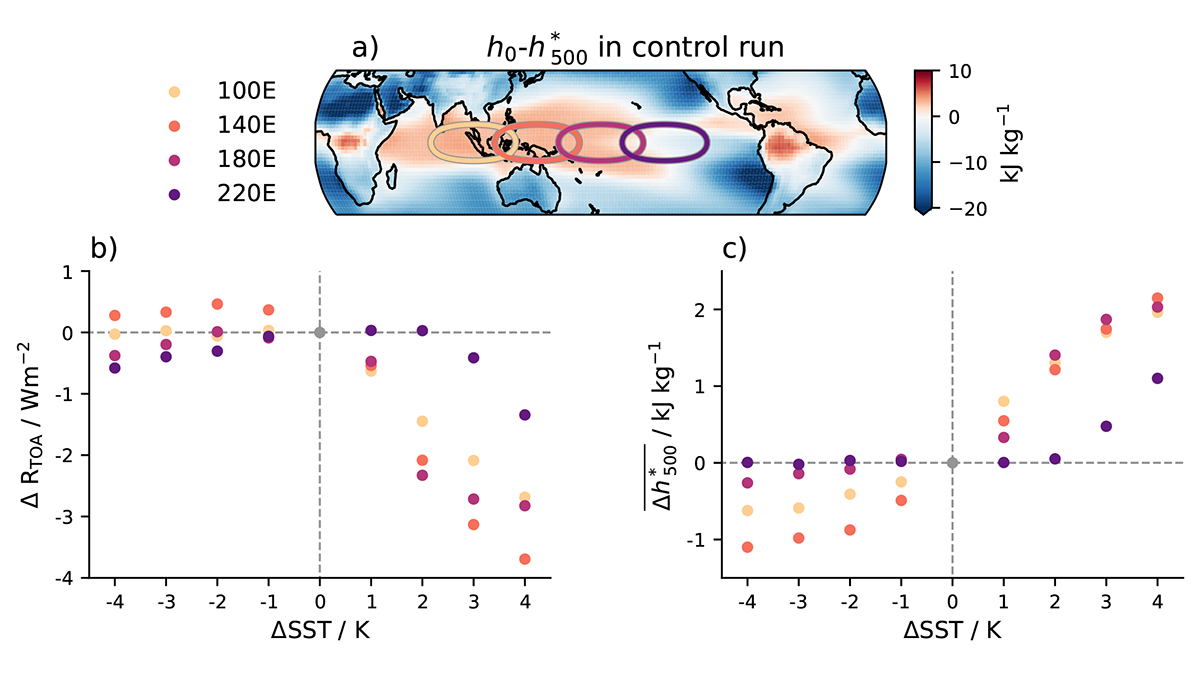Editors’ Highlights are summaries of recent papers by AGU’s journal editors.
Source: Geophysical Research Letters
In order to understand how climate responds to changes in sea surface temperature (SST), it is common to use linear approximations, i.e. the response is assumed to vary linearly with the sign and magnitude of the SST changes. Williams et al. [2023] use model simulations and theory to show that the response of the climate to changes in SST in the tropics can be quite non-linear. For instance, the response in the climate if the SST warms or cools is asymmetric.
Similarly, there is a magnitude dependence on the response that is not linearly related to the magnitude of the change. These differences in the climate response are related to the convective regime in the regions in which the SST changes occur, i.e. if the region typically has strong deep convection or not. These results have important implications as they show the typical assumption that the response is linear is not applicable in parts of the tropics and that the existing frameworks must be modified to take that into account.
Citation: Williams, A. I. L., Jeevanjee, N., & Bloch-Johnson, J. (2023). Circus tents, convective thresholds, and the non-linear climate response to tropical SSTs. Geophysical Research Letters, 50, e2022GL101499. https://doi.org/10.1029/2022GL101499
—Suzana Camargo, Editor, Geophysical Research Letters

